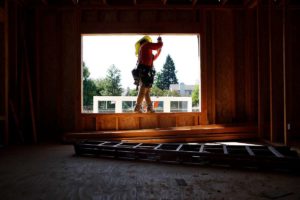Backyard granny flats: California sees them as a solution to housing crisis

Local rents, averaging nearly $2,000 a month, were too expensive for a retiree’s budget. Wolff, a general contractor, considered splitting a lot he had purchased and building two houses side by side, one for his own family and the other for his dad.
Then, in 2017, a new state law increased the maximum size for a backyard cottage to 1,200 square feet, nearly twice what Santa Rosa had previously allowed. That sealed the deal for Wolff, who calculated that if he built a secondary home on his property for under $250,000, the mortgage would be cheaper than paying rent.
His father “loved the idea,” Wolff said. It will be “a really nice house instead of a little apartment somewhere.”
Wolff is one of more than 200 homeowners in Santa Rosa who have applied in the past three years to build secondary units on their properties. Since the beginning of 2018, when a major revamp of local regulations kicked in, the city has received twice as many permit applications for backyard housing as it did in the previous decade.
Lawmakers in Sacramento are hoping to replicate that success statewide by encouraging more secondary homes, which advocates believe could go a long way toward reducing California’s housing shortage. Half a dozen bills are moving in the final days of the legislative session to remove what experts say are some of the biggest obstacles to building these units, including expensive fees that kill projects in the planning stage. Read more >>>